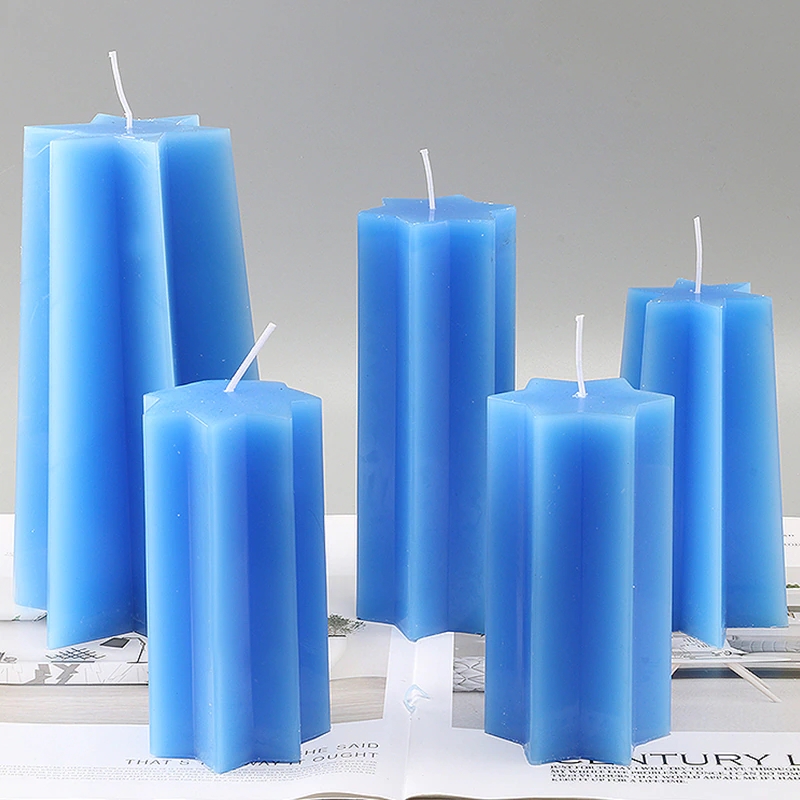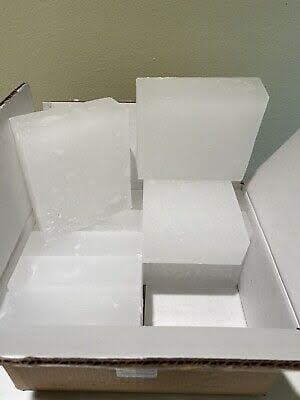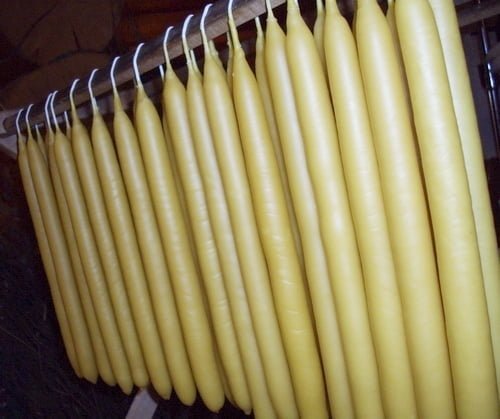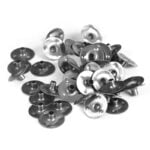The decorative candle making business has seen a surge in popularity in recent years, as more people are drawn to the allure of creating unique and personalized candles for their homes or as gifts. DIY projects have become a growing trend, with individuals looking to express their creativity through handcrafted items, and decorative candles have emerged as a favorite choice for many.
The appeal of decorative candles lies in their ability to add warmth, ambiance, and personality to any space, making them not just ordinary objects but works of art that can be both functional and beautiful.
Aspiring entrepreneurs who are considering delving into the world of decorative candle making will find that it is a rewarding and creative venture. With the right guidance and techniques, one can transform a passion for crafting into a successful business that caters to the demand for handmade and customizable products.
From selecting high-quality materials to mastering design techniques, there is much to learn and explore in this niche industry. By understanding the fundamentals of candle making and embracing the artistic possibilities it offers, individuals can carve out a unique space for themselves in the market.
This article will provide valuable insights into starting a decorative candle making business, from essential supplies needed for creating stunning candles to marketing strategies that can help promote your brand effectively. With tips on safety precautions, pricing strategies, packaging ideas, and inspiring success stories from established candle makers, aspiring entrepreneurs will gain a comprehensive understanding of what it takes to thrive in the competitive world of decorative candle making.
Whether you are just starting out or looking to expand your existing business, this guide aims to equip you with the knowledge and tools necessary to succeed in this creative industry.
Getting Started
If you are considering starting a decorative candle making business, there are several tips to keep in mind to set yourself up for success. Here are some important considerations for aspiring entrepreneurs interested in entering the world of decorative candle making:
- Research the Market: Before diving into starting your own decorative candle making business, take the time to research the market. Understand who your target audience is, what trends are popular in the industry, and identify any gaps or opportunities that you can capitalize on.
- Develop a Business Plan: A solid business plan is essential for any new venture. Outline your goals, budget, pricing strategy, marketing plan, and sales projections. Having a roadmap will help keep you focused and organized as you launch your decorative candle making business.
- Invest in Quality Supplies: The quality of your candles will greatly impact the success of your business. Invest in high-quality supplies such as premium wax, fragrance oils, molds, and wicks to ensure that your products stand out from the competition.
Starting a decorative candle making business can be a rewarding endeavor for creative individuals looking to turn their passion into a profitable enterprise. By following these tips and putting in hard work and dedication, you can build a successful brand that offers unique and beautiful candles to customers seeking handmade artisanal products.
Essential Supplies
When starting a decorative candle making business, having the right supplies is crucial to produce high-quality and visually appealing products. One of the most important components in candle making is choosing the right type of wax. Soy wax, beeswax, paraffin wax, and gel wax are among the most commonly used options.
Each type of wax offers different qualities that can affect the appearance, burn time, and scent throw of the candles. As an aspiring decorative candle maker, it’s essential to experiment with different waxes to find the one that best suits your desired outcome.
In addition to selecting the appropriate wax, having molds is necessary for shaping decorative candles. Molds come in various shapes and sizes, allowing you to create candles in different designs such as pillars, votives, or tapers.
Silicone molds are popular for their flexibility and ease of use, while metal molds are durable and can withstand higher temperatures. Depending on your creative vision for your candles, investing in a variety of molds can expand your product offerings and attract a wider range of customers looking for unique decorative pieces.
Furthermore, wicks play a significant role in how decorative candles burn and release fragrance. Choosing the right wick size and material is essential for achieving an even burn pool and proper scent throw. Cotton wicks are commonly used for their clean burning properties, while wooden wicks offer a crackling sound similar to a fireplace when lit.
When selecting wicks for your candles, consider factors such as the diameter of the container or mold you’re using and the type of wax being poured. Experimenting with different wicks can help you determine which ones work best with your candle designs and fragrances to enhance their overall appeal.
Design Techniques
When it comes to creating decorative candles, design techniques play a crucial role in making your products stand out. There are several ways to enhance the visual appeal of your candles, from layering different colors and textures to embedding unique objects within the wax. One popular technique that can add a touch of elegance to your candles is marbling, which creates beautiful swirls and patterns on the surface of the candle.
To help you explore these design techniques further, here are some tips and ideas to get you started:
- Layering: Experiment with layering different colored waxes to create eye-catching designs within your candles. You can pour one layer of wax, let it cool, then add another layer with a different color or fragrance.
- Embedding: Consider embedding decorative elements such as dried flowers, herbs, or glitter into the wax before it sets. This adds a unique touch to your candles and can create stunning visual effects when the candle is lit.
- Marbling: To achieve a marbled effect, gently swirl two or more colors of melted wax together before pouring them into the mold. Use a skewer or toothpick to create intricate patterns for a truly one-of-a-kind look.
By incorporating these design techniques into your decorative candle making business, you can offer customers a wide range of options that cater to different tastes and preferences. Experiment with various combinations of colors, scents, and textures to create candles that are not only visually appealing but also reflect your creative style as a candle maker.
Remember that practice makes perfect when it comes to mastering these techniques, so don’t be afraid to try new ideas and find what works best for you and your brand. Whether you’re aiming for a sleek and modern look or a more whimsical aesthetic, the possibilities are endless when it comes to creating unique and beautiful decorative candles for your customers.
Marketing Strategies
Starting a decorative candle making business is an exciting venture, but marketing plays a crucial role in getting your products in front of customers. Setting up an online store is a great way to reach a wider audience beyond your local area. Creating a user-friendly website where customers can browse and purchase your decorative candles will help increase sales and expand your customer base. Utilize e-commerce platforms like Etsy or Shopify to set up your online store easily.
In addition to having an online presence, using social media platforms can be highly beneficial for promoting your decorative candle making business. Platforms like Instagram, Facebook, and Pinterest are visually-driven and perfect for showcasing the beauty and uniqueness of your candles. By sharing high-quality images, engaging with followers, hosting giveaways or contests, and collaborating with influencers in the home décor niche, you can attract more attention to your products.
Collaborating with local retailers is another effective marketing strategy for expanding the reach of your decorative candle making business. Approach boutiques, gift shops, or even larger department stores that align with your brand aesthetic to inquire about stocking your candles.
Consignment agreements or wholesale partnerships can help get your products into physical retail locations where customers can see and purchase them in person. Building relationships with retailers also opens up opportunities for cross-promotion and reaching new audiences who may not have discovered your candles otherwise.
Overall, combining multiple marketing strategies such as setting up an online store, leveraging social media platforms, and collaborating with local retailers can help boost the visibility and success of your decorative candle making business in a competitive market. With creativity and persistence, you can effectively promote your unique candles to potential customers who appreciate handcrafted decor items.
Safety Precautions
Decorative candles are not only aesthetically pleasing but also offer soothing scents that can create a relaxing atmosphere in any space. As the demand for unique and personalized decorative candles continues to rise, many individuals are venturing into the world of DIY projects, including starting their own decorative candle making business. However, it is essential to prioritize safety when working with hot wax and fragrances to ensure a safe and enjoyable crafting experience.
When diving into the world of decorative candle making, one must be aware of the potential hazards associated with working with hot wax. It is crucial to use a double boiler or a dedicated wax melting pot to melt the wax gently and avoid direct heat sources to prevent accidents. Additionally, wearing protective gear such as gloves and aprons can protect your skin from burns or spills while handling hot materials.
In addition to hot wax, fragrances play a vital role in creating captivating scents for decorative candles. When incorporating fragrances into your candle making process, opt for high-quality oils specifically designed for candle making to ensure both safety and optimal scent throw.
Proper ventilation in your workspace is also key to avoiding inhaling excessive fumes that may arise from melting wax or mixing fragrances. By prioritizing safety measures when working with hot wax and fragrances, you can enjoy the creative process of running your decorative candle making business while keeping yourself protected from potential risks.
| Safety Precautions | Importance |
|---|---|
| Using protective gear | Prevents burns or spills |
| Proper ventilation | Avoid inhaling excessive fumes |
| Double boiler or dedicated melting pot | Prevents accidents from direct heat sources |
Pricing and Packaging
When starting a decorative candle making business, one of the key aspects to consider is pricing your products competitively. It is important to factor in the cost of materials, labor, and overhead expenses when determining the price point for your candles. Researching the market and understanding what similar products are priced at can also help you set a competitive rate that will attract customers while still ensuring profitability for your business.
In addition to pricing your candles appropriately, packaging plays a crucial role in attracting customers and setting your products apart from competitors. The packaging of your decorative candles should reflect the style and aesthetic of your brand, whether it be sleek and modern or rustic and handmade. Consider investing in high-quality packaging materials such as boxes, jars, or bags that not only protect the candles but also enhance their visual appeal.
Furthermore, personalized touches such as custom labels, ribbons, or tags can add a special touch to your packaged candles and create a memorable unboxing experience for customers. These small details can make a big difference in how your products are perceived by consumers and contribute to building brand loyalty. By carefully pricing and packaging your decorative candles, you can effectively showcase the value of your products and attract repeat business from satisfied customers.
Success Stories
In the world of decorative candle making business, success stories serve as a beacon of inspiration for aspiring entrepreneurs. These individuals have not only turned their passion for crafting candles into a profitable venture but have also left their mark in the industry with their unique creations. From small home-based operations to larger scale productions, these success stories demonstrate that with dedication, creativity, and strategic planning, anyone can achieve success in the decorative candle market.
One such success story is that of Sarah Smith, who started her decorative candle making business from her kitchen table. With a keen eye for design and a passion for experimenting with different techniques, Sarah quickly gained a loyal following for her handcrafted candles.
Through attending local craft fairs and leveraging social media platforms, she was able to expand her reach and establish an online store where customers from all over could purchase her creations. Today, Sarah’s decorative candle business has grown exponentially, with retailers stocking her products and collaborations with interior designers elevating her brand even further.
Another inspiring tale is that of Michael Johnson, a former corporate professional who decided to pursue his dream of owning a creative business. Starting with basic candle making skills learned from online tutorials and workshops, Michael began experimenting with innovative designs and fragrances that set his candles apart from the competition.
By strategically pricing his products competitively and focusing on sleek packaging that appealed to his target market, Michael was able to build a successful decorative candle-making brand within a relatively short time frame. His ability to combine his passion for crafting with sound business acumen serves as a testament to the possibilities that await those willing to take the leap into entrepreneurship in the decorative candle industry.
These success stories underscore the fact that starting a decorative candle making business is not just about creating beautiful products but also about building a strong brand identity, connecting with customers on a personal level, and continuously innovating to stay ahead in this competitive market. By following in the footsteps of these trailblazers and learning from their journeys, aspiring entrepreneurs can gain valuable insights into what it takes to turn their love for candles into a thriving and profitable business.
As the demand for unique and handmade goods continues to rise, there has never been a better time to embark on this creative journey towards entrepreneurial success in the world of decorative candles.
Frequently Asked Questions
Is a Candle Making Business Profitable?
A candle making business can be profitable if managed well. Factors such as production costs, pricing strategy, target market, and marketing efforts all play a role in determining the profitability of the business. Creating high-quality products that stand out in the market can also contribute to success.
How Do I Start a Unique Candle Business?
Starting a unique candle business involves creating candles that differentiate themselves from competitors. This could be through using unusual or high-quality materials, innovative designs, or offering customizable options for customers. Building a strong brand identity and effective marketing strategies are also key in establishing a unique candle business.
What Is the 84 Candle Rule?
The 84 Candle Rule is a method used by some candle makers to determine how many candles they need to sell in order to cover their overhead costs and make a profit. Essentially, it calculates the number of candles needed to be sold at a certain price point to ensure the business remains financially sustainable.
It helps candle makers set realistic goals and pricing strategies for their products.

Welcome to my candle making blog! In this blog, I will be sharing my tips and tricks for making candles. I will also be sharing some of my favorite recipes.





